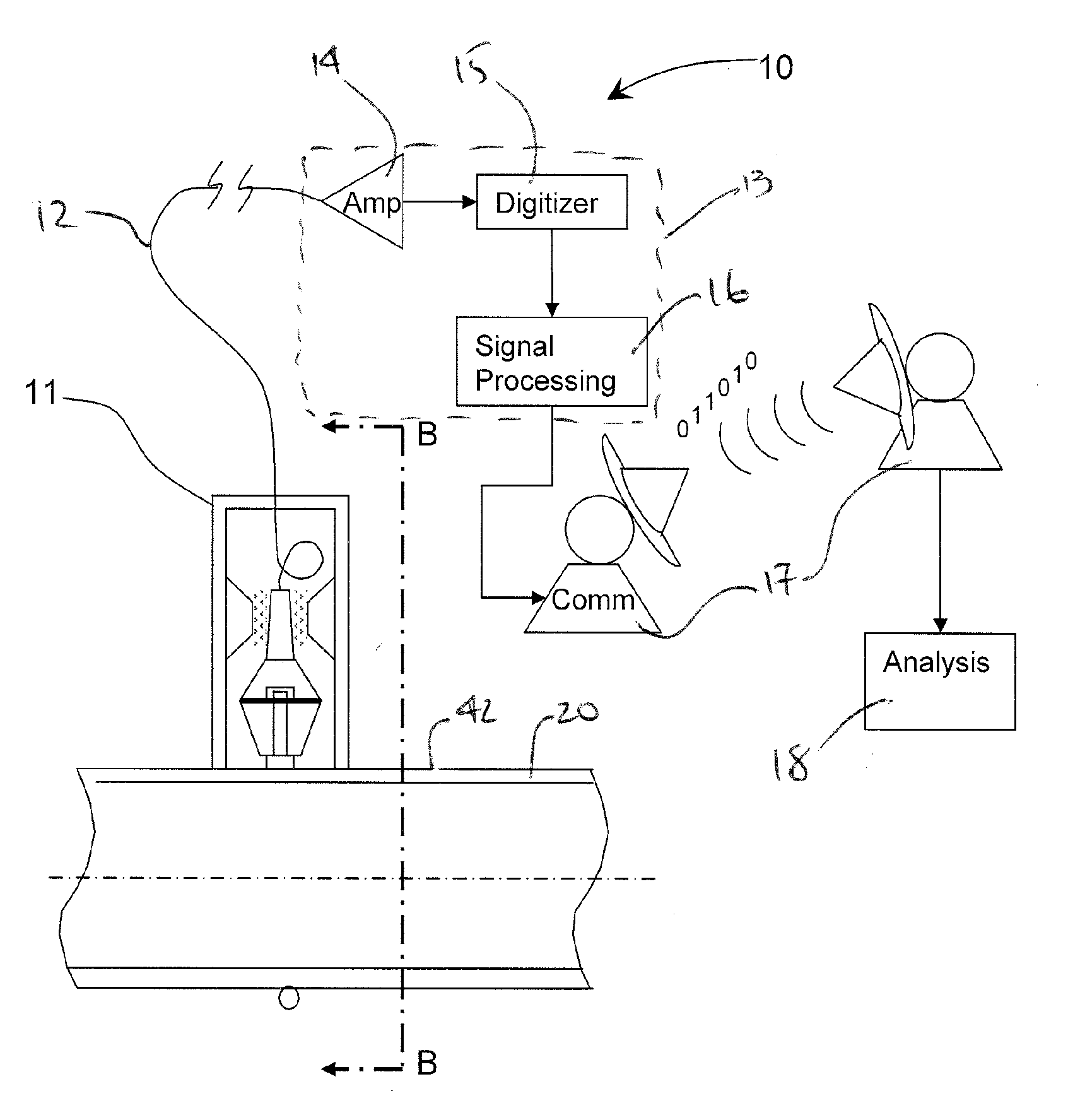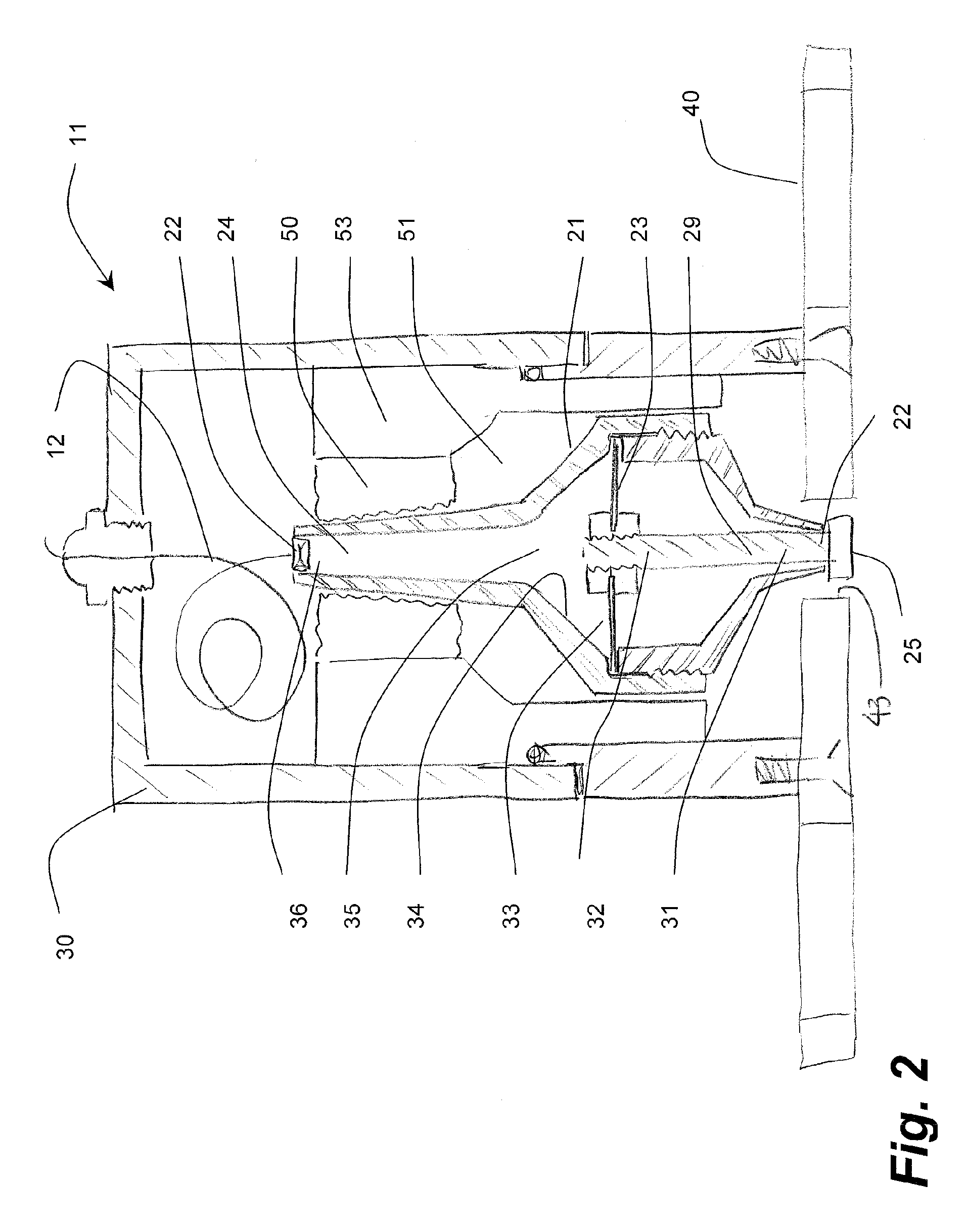System, method and apparatus for acoustic fluid flow measurement
- Summary
- Abstract
- Description
- Claims
- Application Information
AI Technical Summary
Benefits of technology
Problems solved by technology
Method used
Image
Examples
examples
[0065] With reference to FIGS. 6, 7A, 7B and 8, the output of an embodiment of the sensor above was compared against conventional flow measurement techniques. It is well known that flow rate of gas in conduits can be inferred by measuring the differential pressure drop across a known restriction, such as an orifice in a plate. Using a sensor, monitoring electronics, and signal processing techniques, it was shown that the acoustic energy directly correlates very well to the differential pressure across the orifice plate, and thus the acoustic energy correlates with the flow rate of the gas.
[0066] As shown in the comparative acoustic and convention differential pressure analysis of FIGS. 6-8, acoustic energy correlates well to differential pressure, which correlates to flow rate by well known square root calculation.
[0067] Testing of acoustically-determined flow rates were measured in conduits such as standard piping from 1.5″ diameter to 12″ diameter. The orientation of the pipes, ...
PUM
 Login to View More
Login to View More Abstract
Description
Claims
Application Information
 Login to View More
Login to View More - R&D
- Intellectual Property
- Life Sciences
- Materials
- Tech Scout
- Unparalleled Data Quality
- Higher Quality Content
- 60% Fewer Hallucinations
Browse by: Latest US Patents, China's latest patents, Technical Efficacy Thesaurus, Application Domain, Technology Topic, Popular Technical Reports.
© 2025 PatSnap. All rights reserved.Legal|Privacy policy|Modern Slavery Act Transparency Statement|Sitemap|About US| Contact US: help@patsnap.com



